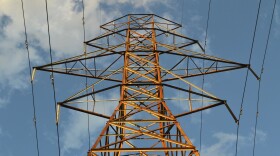
How we generate electric power, the demand for electricity, and the resilience of the electric grid are leading to challenges not seen in many decades.
This is the first report in a five part series this week on the resiliency of the grid during a transition to renewable energy.
First, we look at the new and increasing demands for power in our homes.
Fifteen years ago, the first modern car to use electricity as one of its fuels was introduced in the U.S. - the Chevy Volt. Now, there are many plug-in hybrid and full battery electric vehicles on the market.
The Argonne National Lab keeps track of sales for the U.S. Department of Transportation. In February of this year, plug-in vehicle sales were up nearly 15% from February 2024.
Plug-in electrics and battery electric vehicles are close to 10% of new car sales. But potential buyers have concerns.
“What we found as the biggest barrier for customer adoption is access to home charging,” said Ken Williams, Ford Motor Company’s Director of Charging and Energy Services Customer Experience.
Ford polled customers about their concerns regarding electric vehicles to see how it could overcome some of them, to increase sales on vehicles such as the F-150 Lightning, the Mustang Mach E, and the E-Transit.
“That is also the biggest fear when customers talk to an electrician. They don’t know what they don’t know, is what we find,” Williams added.
Ford offered a program that gave some buyers free home chargers and installation. Some customers did need electric upgrades in their house, but Williams says it’s fewer than you might think.
Does your home need an electric upgrade?
The age of your house might be a determining factor in whether you need an upgrade for charging an electric vehicle.
“There’s a stock of legacy housing across the state that may have 60 or 100 amp services. Those are going to have to be upgraded," said Greg Salisbury, Vice President of Electric Distribution Engineering at Consumers Energy.
Sometimes the upgrade can be fairly simple. A load management device might be sufficient. Sometimes it can be fairly expensive. Not knowing keeps a lot of customers from buying one of those electric vehicles. About the only way to really know is to ask an electrician. Get bids from a few electricians. Prices can vary wildly.
It is becoming a bit more common to see electric plug-in vehicles sitting in the garage, refueling. It’s part of an increase in electricity demand that the utilities have not seen in a long time.
Sixty years ago, a modest home might have a radio, a TV, a radio, refrigerator, and maybe a washing machine.
That demand for electricity went up quickly from there as people added air conditioners, multiple TVs, computers and all kinds of electric gadgets by the 1990s.
Electricity demand has been fairly flat since the turn of this century, but that’s changing.
Sarah Mills is the Director at the Center for EmPowering Communities with the Graham Sustainability Institute at the University of Michigan.
“If we are electrifying everything, if we're adding more EVs, if we are electrifying home heating, if people are getting rid of their natural gas stove and getting an induction stove or an electric stove, right, like this is going to grow the electricity pie,” Mills said.
That is, she said, unless we’re "all in" on energy efficiency. So far, we’re not.

In a lot of cases, the demand can be handled by a bigger transformer in a neighborhood. That’s the big box on top of some of the poles. It lowers the voltage before it gets to your house.
As demand increases, larger substations that convert voltage up or down and send the electricity longer distances will have to be upgraded. That will have to happen pretty quickly in some places in Michigan.
The electric grid is aging
“In some parts of the system, that grid is more than 100 years old, and the voltages that it was put in for are not sufficient for what we are coming to expect as we electrify more uses, including electric vehicles, and as additional resources are being put on the grid. And so that's really one of the places where we're focused,” said Dan Scripps, Chair of the Michigan Public Service Commission, which regulates the state’s investor-owned electric utilities.
He added additional demands could be coming from data centers to handle the growing use of artificial intelligence.
Some experts say Michigan also might be seeing additional manufacturing plants and their accompanying demands for electric power - although just as many experts think that form of economic growth is overly optimistic.
The increased demand for power comes at the same time the utility companies are trying to come to terms with outages and system failures, increasingly due to intense storms caused by climate change.
All this is happening as power companies are trying to transition to renewable energy in order to meet emission goals set by the state of Michigan.
There are a lot of moving parts to what is expected to be the biggest change in the U-S power system in a century.
In the next report of the series tomorrow, we'll look at the reliability and the resilience of the electric grid.
Consumers Energy is among Michigan Public's corporate sponsors.






